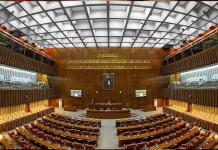Critics, particularly from rival nations, argue that CPEC represents a tool of Chinese influence or that Pakistan’s debt obligations could become burdensome. Some analyses describe the partnership as an effort by both countries to control regional narratives and conduct psychological diplomacy. However, within Pakistan, the general perception remains that the alliance with China is a strategic necessity — one that guarantees economic security, technological progress, and regional stability in an increasingly competitive world.
Khalid Mahmood
Daily life in Pakistan remains normal and vibrant. Business activities, cultural gatherings, and international events such as cricket matches, global conferences, and trade exhibitions continue to take place across the country. In cities like Islamabad, daily life reflects stability and a strong sense of continuity, even though social media often exaggerates challenges and projects a distorted image of the nation.
Pakistan’s foreign relations are shaped by complex regional dynamics. The country frequently finds itself at odds with Western powers and its eastern neighbor, India. Despite these pressures, Pakistan’s strategic and economic future is deeply tied to its long-standing partnership with China — a relationship that has endured for over five decades. This alliance has evolved from political and military cooperation into a strong economic partnership, symbolized by the China-Pakistan Economic Corridor (CPEC).
CPEC, the flagship project of China’s global Belt and Road Initiative (BRI), represents a major transformation in Pakistan’s development strategy. Valued at approximately $62 billion over 15 years, CPEC is a comprehensive infrastructure program aimed at modernizing Pakistan’s transportation networks, boosting energy production, and creating industrial zones to enhance trade and investment. For China, it offers a vital trade route to the Arabian Sea through Gwadar Port; for Pakistan, it serves as a gateway to economic growth and modernization.
This collaboration underscores the depth of Pakistan’s commitment to its alliance with China. The Pakistani leadership, both civilian and military, has pledged to protect CPEC “at all costs,” recognizing its central role in national stability and prosperity. Pakistan views the project as a lifeline that can address chronic issues such as unemployment, energy shortages, and infrastructure gaps. In turn, China regards Pakistan as a key strategic partner in safeguarding regional connectivity and ensuring the success of its Belt and Road vision.
The relationship between the two nations extends beyond economics; it is a cornerstone of Pakistan’s foreign policy. Both governments coordinate closely to promote a unified narrative about CPEC, counter misinformation, and defend the project against international criticism — especially from Western and Indian media outlets. This shared stance reflects their mutual interest in maintaining geopolitical balance in South Asia and projecting strength through cooperation.
Critics, particularly from rival nations, argue that CPEC represents a tool of Chinese influence or that Pakistan’s debt obligations could become burdensome. Some analyses describe the partnership as an effort by both countries to control regional narratives and conduct psychological diplomacy. However, within Pakistan, the general perception remains that the alliance with China is a strategic necessity — one that guarantees economic security, technological progress, and regional stability in an increasingly competitive world.
In this context, it becomes the duty of Pakistan’s friends and allies, especially China, to stand by the nation through both challenges and triumphs. The Pakistan-China partnership is more than a diplomatic arrangement; it is a long-term vision rooted in mutual trust, shared development, and collective resilience. As the saying goes, “Seeing is believing” — those who visit Pakistan and witness its progress firsthand understand that the spirit of cooperation between the two countries continues to shape a promising future for the region.

















